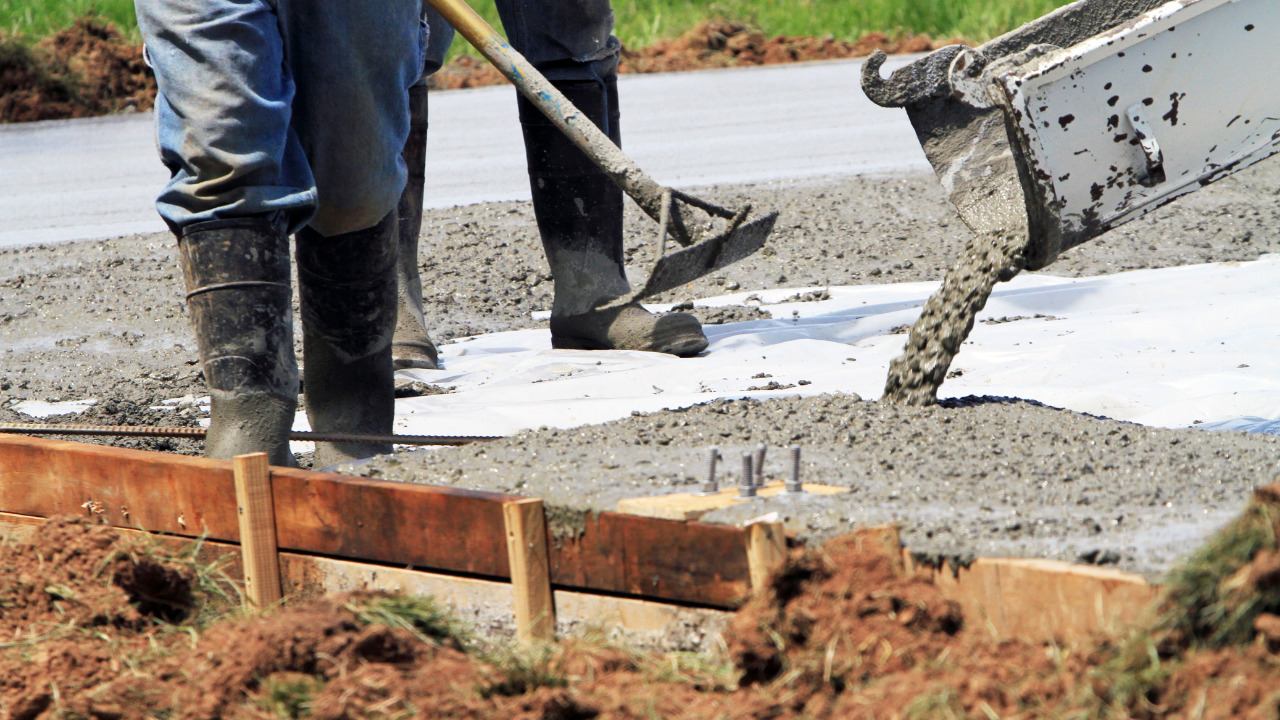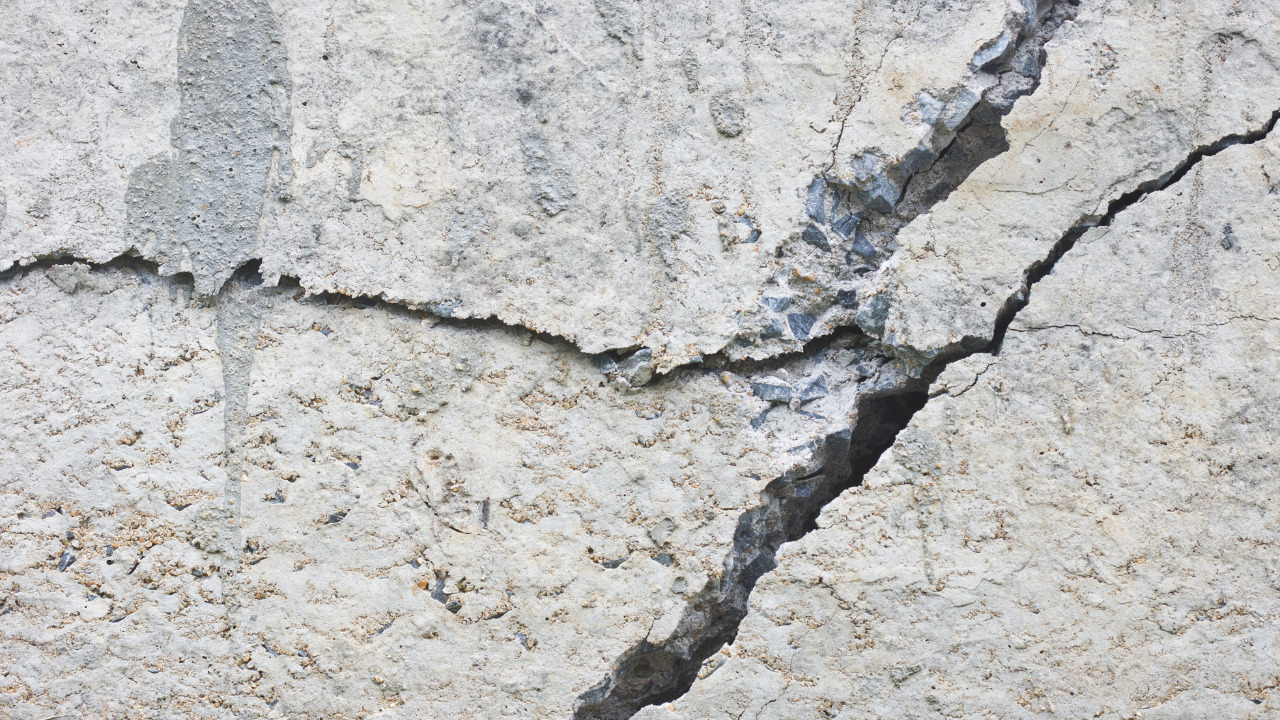Concrete dries slightly when it cures and shrinks slowly over time. The concrete expands in response to changes in temperature or humidity. Concrete expands in warmer weather, shoving anything in its way. Crusts and fissures occur when texture and patterns are added to concrete surfaces.
When concrete freezes, the water expands into little bubbles rather than shattering. Although it dries out in most dry, winter-heated cellars, it is still covered in plastic, so it cracks. This article will explain why concrete expands and how it expands when curing.
Table of Contents
Why Does concrete Expand When It Dries?
Concrete expansion induces tensile strains in the concrete, which cause cracking, delamination, and splintering in the surrounding concrete. Concrete shrinks as the weather worsens, although it does not expand as much as it does when it is hot.
On the other hand, concrete expands when it is hot or the moisture level changes. That is why expansion joints are required in bridges, buildings, and other structures. Interior slabs rarely require expansion joints since concrete does not expand or become as hot.
Expanding joints are rarely required in concrete pavement because shrinkage joints open wide enough to accommodate temperature expansion.
What Is The Expansion Ratio Of Dried Concrete?
The majority of shrinkage after concrete curing is permanent. However, it expands in extreme heat or when the moisture content changes. When concrete is allowed to distort, temperature changes cause it to expand or compress. The scale of concrete construction has no bearing on its resistance to temperature changes.
Concrete expands slightly when the temperature increases and contracts slightly as the temperature drops. Moisture absorption by the cement colloid is the source of wet expansion deformation.
What Are The Reasons For Cracks In Dried Concrete?
Due to the stress, a crack could emerge. When the surface evaporation rate surpasses the moisture provided by bleeding, cracks in polymers diminish—concrete shrinks when it loses too much moisture from its surface, resulting in a fractured map.
The top of the concrete slab dries faster than the floor, causing it to separate and dry out. It shrinks and splits when the concrete dries quickly, similar to how clay soils dry.
Although this fast-curing cement shrinks more than typical Portland cement, its chemical composition might cause it to have a significantly larger water content than other cement kinds.
Because too much water can weaken concrete, lowering the water concentration in the concrete mixture will aid in curing. Because water evaporates, a higher water-to-cement ratio causes shrinkage. Shrinkage is caused by a hardening agent, not too much or too little water in the cement mix.
Temperature changes can cause cracks in concrete. Concrete expands as it heats up and compresses as it cools. Concrete will crack if it tries to expand or shrink but cannot do so.
Cement To Water Ratio
It is crucial to consider the amount of water added because cement and water are the main basic materials used to make concrete. If there is more water, it may dry out and cause the concrete to contract over the summer.
The volume of concrete will also increase in the winter if the temperature is 4 degrees Celsius since water expands at such temperature.
Age Of Structure
The age of the structure is a major factor in concrete expansion and contraction. Due to prolonged exposure to temperature change and other factors, a concrete structure will have a larger volume after five years than at the measurement time. As opposed to this, there won’t be much of a change in volume for a concrete construction that is a year old.
Atmosphere
Concrete will expand and shrink according to atmospheric humidity as well. The content of moisture increases with increasing humidity. An exposed concrete surface may absorb moisture and expand due to internal swelling. Similarly, if the humidity is lower, the air will have less moisture.
The structure will get smaller due to water in the concrete evaporating to fill the hole. In this instance, the concrete structure’s expansion and contraction are typically undetectable unless and until it is exposed to the elements for an extended period.
Concrete Can Expand Even After Shrinkage
After concrete cures, the majority of shrinkage is permanent. Extreme heat or a change in moisture content will cause it to expand. This is why concrete bridges are built with plenty of capacity for growth. However, expanding concrete will not revert to its original state.
A thermal differential fracture appears when the top of the concrete dries quicker than the bottom. This cracking is simple to spot since it leaves large gaps and appears rough. This form of fissure appears when concrete is put on surfaces where heat does not penetrate the cement from below.
What Are The Disadvantages Of Concrete Expansion?
A wall or column that sits on its foundation travels deep into the slab, which undermines it, much as a slab of concrete does not shrink or expand during temperature changes, even if it is somewhat extended or compressed.
Understand that you can create a space that will inevitably crack, but you cannot relocate the space. The concrete slab expands whenever the temperature or humidity rises. Concrete slabs expand in hot weather, pushing anything in their path aside.
Tensile strains are created by this expansion, causing cracks, delamination, and splintering in the surrounding concrete. Concrete shrinks when bad weather worsens, but it doesn’t expand as much as in hot weather.
Frequently Asked Questions
Does dried concrete also expand?
Yes! For every 100 feet of concrete, the material can expand by up to half an inch. However, this number can change significantly depending on the heat and the surroundings. Summertime concrete expansion is normal and may be expected.
Why does concrete shrink after pouring?
Concrete shrinks as it dries and becomes more durable. When too much mixing water evaporated, this happened. The shrinkage will increase with increasing concrete mix wetness or soupiness. Up to half an inch of every 100 feet of concrete slabs can shrink.
How often do you need to water concrete after pouring?
The objective is to maintain concrete saturation during the first 28 days. Five to ten times a day, or as often as possible, should be used to mist the slab with water for the first seven days after installation. As soon as the concrete is poured, the curing process starts.
Conclusion
This is necessary to install concrete screeds with a heating system because concrete expands and contracts with heat. The information discussed in this article can help you diagnose cracked or expanding concrete. Contact a local concrete contractor for an in-person examination if you want a professional opinion.
Concrete contractors must adhere to well-established concrete installation rules. It takes about a month for concrete to dry and reach full strength for each inch of slab thickness.













